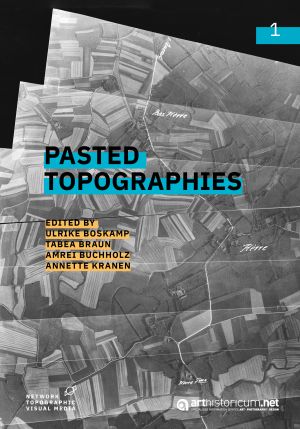How to Cite
License (Chapter)

This work is licensed under a Creative Commons Attribution-NoDerivatives 4.0 International License.
Published
Flying Filming
Der Reihenbildner and Aerial Photomontage
The Reihenbildner was the first German film camera able to map territories from an aeroplane. Designed by the cinema pioneer Oskar Messter for the German Air Force in 1915, this device became crucial in military surveying, as the overlapping film images allowed the best substitute for a map to be produced as quickly as possible. The “flying cinematograph,” as the German press nicknamed the Reihenbildner, was an apparatus of visual intelligence in World War I. This essay analyses the process of recording, assembling, and propagandising topographies in Germany. Moreover, it compares the technique of military aerial photomontage with the more celebrated experimentation of Dadaist photomontage. Unlike the dynamic and explosive multiperspectivism of avant-garde practices, aerial photo maps offer a static and uniform space dominated by sequential sectioning rather than fragmentation. Therefore, mapping realised by the Reihenbildner suggests a novel interpretation of montage as a metaphor for modernity.







